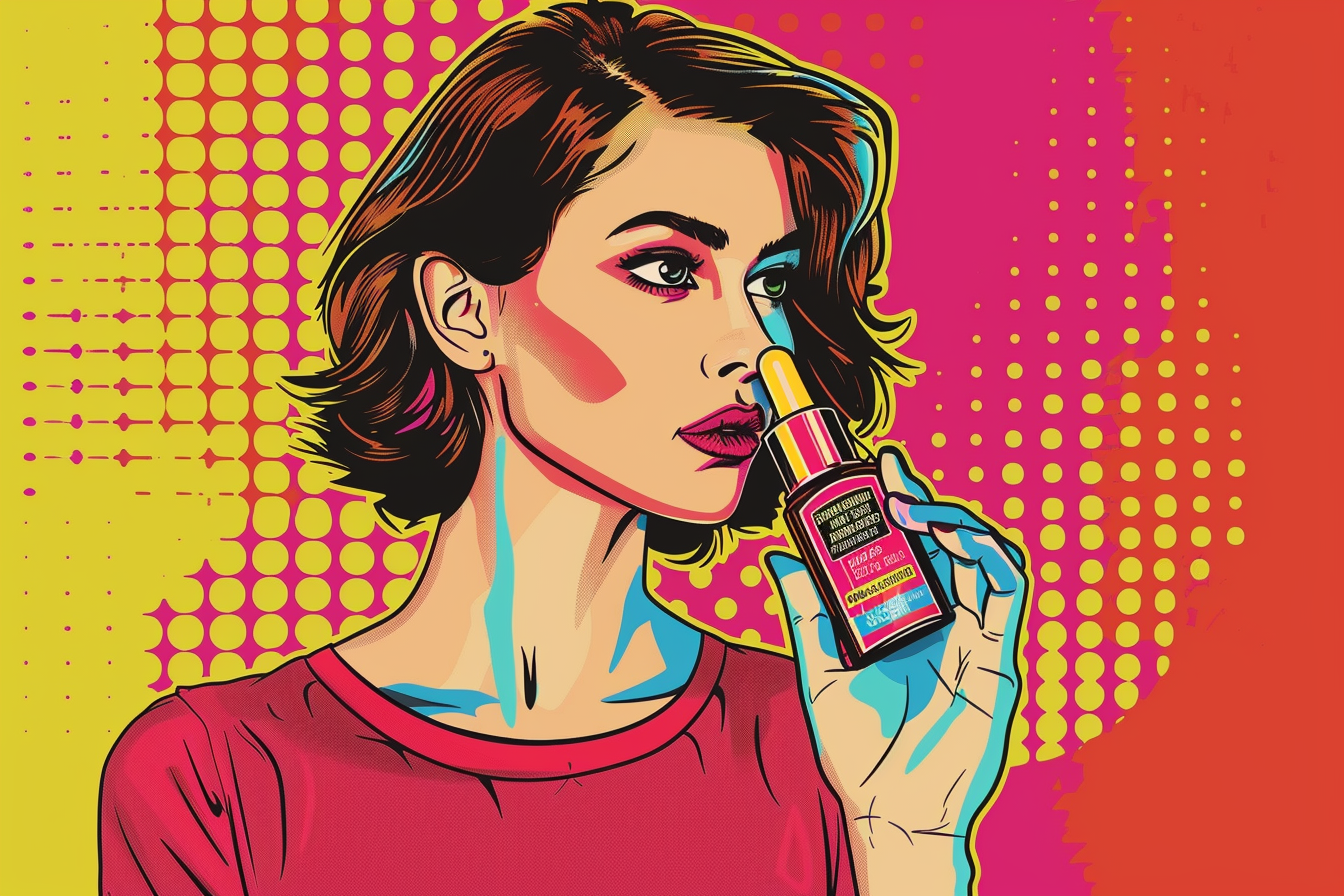
Castor oil is one of those iconic beauty staples with a reputation that seems to transcend time.
Perhaps you grew up with it at home or noticed a trusted bottle in your grandmother’s medicine cabinet when you were a child, but the rich history of castor oil goes back a lot farther than just a few generations. Ancient civilizations from India, Egypt, China, and beyond relied on castor oil as a healing property in ointments and balms, as well as an elixir for digestive health among other things.
The great news is that what’s old is becoming new again as science starts to explore castor oil’s topical benefits in a more detailed and measured way. As it turns out, castor oil is extremely beneficial for your body’s largest organ (your skin!).
First Thing’s First...What Exactly Is Castor Oil?
Castor oil is extracted from the seeds of the castor bean plant (also known as Ricinus communis). Castor bean plants are indigenous to the southeastern Mediterranean Basin, Eastern Africa, and India, but are widespread throughout tropical regions (and widely grown elsewhere as an ornamental plant). When the seeds are cold-pressed, the resulting oil is light, velvety, and packed with nutrition.
Classified as a triglyceride fatty acid, more than 80% of castor oil’s fatty acid composition is made up of a rare and beneficial substance called ricinoleic acid. Seemingly magical, ricinoleic acid gives castor oil some unique (and amazing) antioxidant and antimicrobial properties.1,2,3 Monounsaturated fats like ricinoleic acid are a wonderful addition to your beauty routine because they help balance and maintain moisture in the skin, producing dewy, soft, gorgeous skin.
Here are all the (other) reasons why we’ve forever-fallen for castor oil:
It’s one of the best ways to defend your skin.
Exposure to UV rays, metals and pollution in the air, and even everyday occurrences such as unhealthy food choices, and stress can leave you battling free radicals, which can ravage your skin cells all the way down to your DNA. Fortunately, castor oil’s antioxidant composition helps scavenge free radicals, helping your skin look bright, smooth, and healthy at every age.13
It helps minimize the appearance of stretch marks.
Whether its due to weight gain (or loss), puberty, or a growing baby belly, stretch marks tell the remarkable story of your changing body. The skin-loving antioxidants in castor oil hydrate and deeply revitalize the stretched dermis, enhancing the skin’s natural texture and color while making stretch marks virtually unnoticeable. Slathering this oil over some of your body’s most sensitive skin can help you connect with those significant chapters of life while also leaving your skin more nourished than before.14
It’s completely hydrating without feeling greasy.
You’ll often find that high-end skincare products are suffused with components like ricinoleate, oleate, and linoleate—which all happen to be found naturally in castor oil. This is why castor oil is considered one of nature's most dynamic moisturizers. Since it’s so rich in nourishing fatty acids, it’s also an excellent everyday moisturizer for skin and lips. And its full, thick texture helps it stay in place to keep your skin hydrated and protected all day long—without clogging your pores. You don’t need much to feel its effects; a little bit goes a long way! Simply rub a few drops between your fingers and massage gently into your face, lips, and body.
For those nurturing sensitive skin, castor oil’s low comedogenic score means it is unlikely to congest your skin, making blackheads a distant memory. Even better, quick absorption allows your skin to gulp this stuff up, leaving you with maximal glow, not grease.
You can feel confident and clear.
When breakouts arise, it’s easy to succumb to crude creams and cleansers, but these products tend to sweep away both the bad and good bacteria that are found in your skin. Without beneficial bacteria, the skin cannot naturally rejuvenate itself. Castor oil is a healthy natural alternative, with inherent antifungal, antibacterial, and antiviral properties. When occasional puffiness, breakouts, redness, irritation, or sunburn are an issue, castor oil has a particularly gentle, calming effect. It can help safeguard your skin from pesky bacteria while giving your skin the healthy balance it craves.
Castor oil isn’t just for dealing with skin challenges, though. Interestingly, castor oil beauty benefits go way farther than skin deep. Research also shows that applying castor oil topically seems to help optimize your skin’s natural defenses for glowing wellness, which translates to beauty from the inside out!4,5,6
When it comes to all the ways it can bring out your natural beauty, castor oil turns out to be incredibly versatile. Try it when you crave:
• Glossy, gorgeous hair: Castor oil moisturizes each thirsty hair shaft, leaving your locks looking softer, shinier, and less frizzy. As your hair’s condition improves, its color may even begin to appear richer and deeper. Ricinoleic acid also seems to inhibit a growth disrupting protein called prostaglandin D2 (PGD2), so conditioning your scalp with castor oil helps encourage fuller, longer hair.7,8 Work a few drops of castor oil thoroughly into hair, scalp, brows, and eyelashes—or mix it into your regular hair conditioner.
• Naturally lovely nails: When you’re moisturizing your hands and feet, don’t forget your nails! Rubbing in a small amount will keep your finger and toenails shiny, conditioned, subtle, and hydrated.
• Workout gains without the pain: When soreness from your latest gym session starts to kick-in, the ricinoleic acid in castor oil comes to the rescue—soothing tired, achy muscles and joints. Just rub some on post workout to feel refreshed so you can stay committed to your exercise goals.9
The More, the Merrier
With all the good castor oil does, it’s more than earned the right to stand alone as an excellent holistic beauty-booster. But this doesn’t mean castor oil doesn’t play well with others! It’s actually a terrific carrier oil, so feel free to mix in a drop or two of your favorite beneficial essential oil—such as lavender or frankincense, which are safest when used alongside fatty vegetable oils.
Castor oil’s gentle and nourishing tones also work well when mixed with other natural products. For a silkier, easier to spread experience, mix a little castor oil into a smoother beauty oil such as coconut, argan, jojoba, or rosehip. You can also combine a few drops of castor oil with your regular moisturizer, shampoo, lip gloss, or conditioner.
Here’s How to Choose the Very Best Castor Oil
When shopping for castor oil, be aware that not all products are created equally. It’s important to investigate the source of your castor oil, as many companies do not thoroughly vet their suppliers or adhere to the highest possible standards. While the likelihood of running into truly toxic castor oil is rare, there are ongoing studies surrounding the risks of misjudging essential oils and natural ingredients.
Always be mindful of the ingredient list on the back of the bottle. This is the easiest way to guard your skin (and wallet) from harmful additives and questionable, imposter products. The texture is key when it comes to determining the legitimacy of your castor oil. A thin, runny consistency is not a true characteristic of castor oil, and is a clear sign that your product has been diluted.
Because of castor oil’s natural scent, many brands supplement their oil with additional fragrances that can aggravate the skin barrier. In addition, some companies use preservatives like grape seed extract, which can also be a skin irritant. As you can imagine, rubbing such temperamental additives onto the hypersensitive skin of your face and scalp could be problematic.
To get the most benefit, seek out a cold pressed, hexane free, single-ingredient oil, such as Valentia Castor Oil, that’s stored in protective amber glass and is paraben, sulfate, fragrance, and preservative free—and is also sustainably and ethically sourced without cruelty to animals (or people!).
Despite what we’re sold in magazines and multi-million dollar commercial campaigns, beauty really can be simple, wholesome, and easy. Each precious drop of this special oil connects you with age old wisdom, as it holistically reveals your best looking self in the here and now. Being vigilant about what you put on your skin is one great step towards living a more conscious and empowered life. It’s our hope that the healing properties of castor oil can help to transform your skin and hair—for a rejuvenated and healthier you.
References:
1. Llavarasan, R., Mallika, M., & Venkataraman, S. (2006). Anti-inflammatory and free radical scavenging activity of Ricinus communis root extract. Journal of Ethnopharmacology, 103(3), 478-480. doi:10.1016/j.jep.2005.07.029
2. Iqbal, J., Zaib, S., Farooq, U., Khan, A., Bibi, I., & Suleman, S. (2012). Antioxidant, Antimicrobial, and Free Radical Scavenging Potential of Aerial Parts of Periploca aphylla and Ricinus communis. ISRN Pharmacology, 2012, 1-6. doi:10.5402/2012/563267
3. Vieira, C., Evangelista, S., Cirillo, R., Lippi, A., Maggi, C. A., & Manzini, S. (2000). Effect of ricinoleic acid in acute and subchronic experimental models of inflammation. Mediators of Inflammation, 9(5), 223-228. doi:10.1080/09629350020025737
4. Grady Harvey. (n.d. Immunomodulation through castor oil packs. Journal of Naturopathic Medicine, 7(1):84-89.
5. Kennedy DA, Keaton D. (2012). Evidence for the Topical Application of Castor Oil. Int J Nat Med, 5(1).
6. Mein, E. A., Richards, D. G., McMillin, D. L., & Nelson, C. D. (2005). Transdermal Absorption of Castor Oil. Evidence-Based Integrative Medicine, 2(4), 239-244. doi:10.2165/01197065-200502040-00006
7. Fong, P., Tong, H. H., Ng, K. H., Lao, C. K., Chong, C. I., & Chao, C. M. (2015). In silico prediction of prostaglandin D2 synthase inhibitors from herbal constituents for the treatment of hair loss. Journal of Ethnopharmacology, 175, 470-480. doi:10.1016/j.jep.2015.10.005
8. Ohyama, M. (2012). Faculty of 1000 evaluation for Prostaglandin D2 inhibits hair growth and is elevated in bald scalp of men with androgenetic alopecia. F1000 - Post-publication peer review of the biomedical literature. doi:10.3410/f.715497912.792402828
9. Medhi, B., Kishore, K., Singh, U., & Seth, S. D. (2009). Comparative clinical trial of castor oil and diclofenac sodium in patients with osteoarthritis. Phytotherapy Research, 23(10), 1469-1473. doi:10.1002/ptr.2804
10. Salles, M. M., Oliveira, V. D., Souza, R. F., Silva, C. H., & Paranhos, H. D. (2015). Antimicrobial action of sodium hypochlorite and castor oil solutions for denture cleaning – in vitroevaluation. Brazilian Oral Research,29(1), 1-6. doi:10.1590/1807-3107bor-2015.vol29.0104
11. Final Report on the Safety Assessment of Ricinus Communis (Castor) Seed Oil, Hydrogenated Castor Oil, Glyceryl Ricinoleate, Glyceryl Ricinoleate SE, Ricinoleic Acid, Potassium Ricinoleate, Sodium Ricinoleate, Zinc Ricinoleate, Cetyl Ricinoleate, Ethyl Ricinoleate, Glycol Ricinoleate, Isopropyl Ricinoleate, Methyl Ricinoleate, and Octyldodecyl Ricinoleate1. (2007). International Journal of Toxicology,26(3_suppl), 31-77. doi:10.1080/10915810701663150
12. Vieira, C., Evangelista, S., Cirillo, R., Lippi, A., Maggi, C. A., & Manzini, S. (2000). Effect of ricinoleic acid in acute and subchronic experimental models of inflammation. Mediators of Inflammation,9(5), 223-228. doi:10.1080/09629350020025737
13. Lobo, V., Patil, A., Phatak, A., & Chandra, N. (2010). Free radicals, antioxidants and functional foods: Impact on human health. Pharmacognosy Reviews,4(8), 118. doi:10.4103/0973-7847.70902










